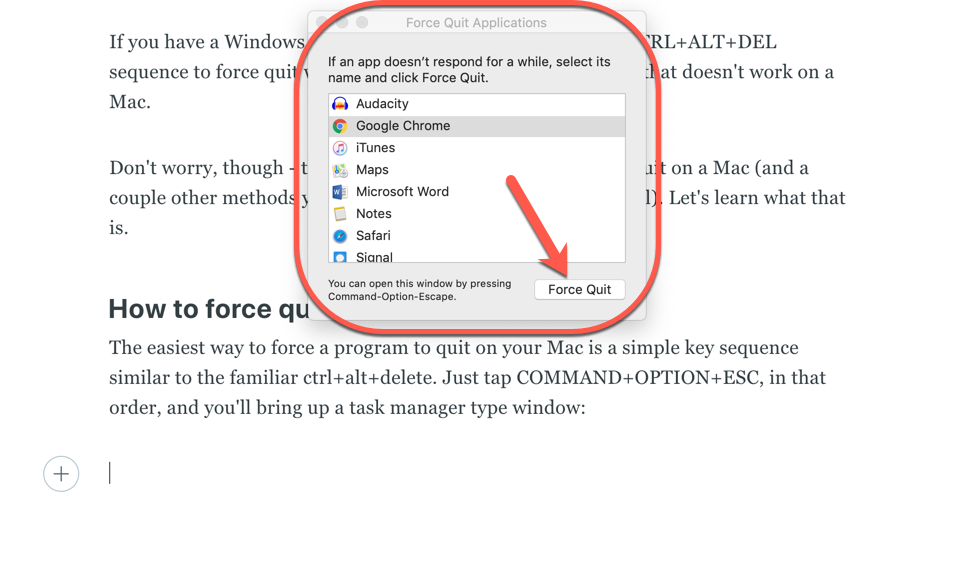
- #WINDOWS ON MAC DELETE KEY HOW TO#
- #WINDOWS ON MAC DELETE KEY WINDOWS 10#
- #WINDOWS ON MAC DELETE KEY MAC#
- #WINDOWS ON MAC DELETE KEY WINDOWS#
#WINDOWS ON MAC DELETE KEY WINDOWS#
If you wish, there is another option to delete Windows using the classic method to delete partitions from a disk on Mac. If you have several disks you must first select the disk that contains this operating system and then click on “Restore the disk to a single partition with macOS”.
#WINDOWS ON MAC DELETE KEY WINDOWS 10#
If you have a single disk you must click on “Restore” when the option to delete Windows 10 appears. Close all the applications and windows that you have open and if you have external storage devices, disconnect them. #WINDOWS ON MAC DELETE KEY MAC#
If you have a frozen Mac that won't do anything and you can't use any of the methods above to force quit (tip: you can force quit the Finder if it's misbehaving - it's just an app), you need to force it to restart. Unlike Windows macOS doesn't use the typical Ctrl-Alt-Delete shortcut to choose frozen programs to Force Quit. But if the whole system is not responding and force quit doesn't work on Mac, you'll have to give it a fresh start. To fix browser freezing - let's say, if you can't quit Safari - it would be enough to go into Activity Monitor and kill Safari processes. What to do when your Mac freezes? How do you start Task Manager on a Mac? Sometimes it's not just one app that's unresponsive. What do you do when application won't Force Quit
Click on the magnifying glass in the top right corner, type the name of the app, and click on it once it appears. Click on the app icon if it's in the Dock. #WINDOWS ON MAC DELETE KEY HOW TO#
Once you learn how to force quit an app on Mac, here are two quick ways to relaunch it:
Type "kill111" (replacing 111 with the PID number) - this will perform force quit on Mac for the selected program. Type "q" to return to the command line. In the Command column, find the name of the app you want to terminate and make a note of its PID number (right on the left). You'll see the information about all the apps that are active at the moment. Type "top" and press the Return button. Terminal. If the basic methods don't work, you can access Terminal utility in the Applications and type the force quit command:. This will bring up the Force Quit dialog box and you can select the unresponsive app from there.  Apple Menu. The third way to do the equivalent of control alt delete on a Mac keyboard is to click on the Apple menu and select Force Quit. You can double-click on any application in the Activity Monitor to bring up a separate window with more information about it and the Quit option to close it. Dock. If you hold down the Control and Option keys, and click on an app's icon in the Dock, you'll see Force Quit listed as an option in the menu that pops up. There are a couple of other force quit shortcuts to unfreeze app on Mac: And if you need more information, you can launch Activity Monitor directly from the iStat Menus app.Īll other alternatives for Ctrl+Alt+Del on a Mac It will show you which apps are using the biggest CPU cycles.
Apple Menu. The third way to do the equivalent of control alt delete on a Mac keyboard is to click on the Apple menu and select Force Quit. You can double-click on any application in the Activity Monitor to bring up a separate window with more information about it and the Quit option to close it. Dock. If you hold down the Control and Option keys, and click on an app's icon in the Dock, you'll see Force Quit listed as an option in the menu that pops up. There are a couple of other force quit shortcuts to unfreeze app on Mac: And if you need more information, you can launch Activity Monitor directly from the iStat Menus app.Īll other alternatives for Ctrl+Alt+Del on a Mac It will show you which apps are using the biggest CPU cycles. 
Tip: If apps regularly become unresponsive or start hogging processor cycles, iStat Menus can help get to the bottom of what's causing the problem. If you don't want to memorize the shortcut, there's an easy way to perform the same action via the Apple menu: Click on the Apple logo in the upper left corner > Force Quit > select the app and force quit (the equivalent of ctrl alt del on Mac).
Select the non-responding app and press Force Quit. Usually the one that's causing a problem will be labelled as not responding. Once you've called up the dialog box, you'll see a list of currently running apps. The command would still works when the app is in full-screen mode. This can be used at any time but, given that you can quit any app by making it active and pressing ⌘+Q, the only time you'll need it is when an app stops responding or starts beachballing. Press ⌘+Option+Esc and you'll bring up the Force Quit dialog box. So here's how to do Ctrl Alt Delete on a Mac: 
And guess what, there's a shortcut for that as well. The simplest answer to "How do you control alt delete on a Mac keyboard?" would be to use Force Quit.







 0 kommentar(er)
0 kommentar(er)
